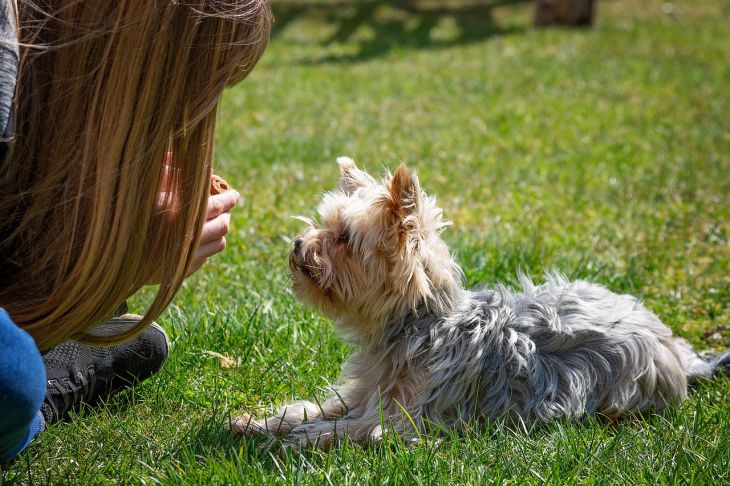If a pet often runs next to its owner and puts its paws on him, there are a number of reasons that explain such behavior.
Trying to get attention
Dogs are smart and learn from their environment. Using their paws to communicate is something they learn as puppies, and they can even copy human movements. If a dog persistently puts its paw on a person, it is most likely trying to get attention.
A pet may be signaling that it wants its owner to focus on it. Paw movements can be annoying, especially if the dog is too persistent. Every time the person gives in and gives attention, the dog learns that using the paw actually gets attention.
Expresses love
A dog can also use its paws to show affection. Most likely, a person has placed a hand on the dog's head or back and gently stroked it, sometimes without even noticing. A dog can learn this behavior, and then use paw touches to let the owner know that it is close and loves its owner.
Wants the person to continue what he is doing
If a person was petting a dog and holding it close to him, but then moved away, he may feel a paw on his arm or leg.

In this situation, a paw combined with a pleading look may mean that the dog wants him to continue what he is doing. Some dogs will follow the person, nudging him with their head or placing it on their lap.
Wants the person to stop
If you pet your dog and you come across an area that is painful, your dog may put its paw on your palm to stop you. This applies to any situation that your dog may not like, such as when you take off your harness or start to brush your dog.
It is very important to listen to what the dog is saying and watch for changes in body language. A relaxed dog may use a paw at first, but even the sweetest dog has a limit to what he is willing to put up with.
Irons back
Because dogs learn from their owners, they may try to pet a person with their paws. When a person pets a dog or sits next to a dog, the dog may use its paw to pet him or her or place it on the owner to reciprocate the gesture.
Alarmed
Some dogs try to alert humans to how they are feeling by using their paws, and anxiety is often communicated through physical touch.
If a dog is anxious about a place, person or situation, they may place their paw on the person in search of comfort and reassurance. This is often combined with other movements to look for, such as yawning, lip licking, trembling, or tucking their tail.
Wants to play
A dog who wants to play will be full of energy. Dog body language can be difficult to understand, but a playful dog is always easy to recognize. The pet may wag its tail excitedly, grin widely, and tap its paw eagerly at you.
Some dogs will even bring a toy to their owner and hold it in their mouth while extending a paw, signaling that they desperately want him to join them.

Lack of self-confidence
Dogs are emotional and rely on their owner for guidance on how to act.
If a dog feels insecure about a situation, is stressed, or is worried about something, it may put its paw on a person in search of comfort.
As with anxiety, other strong emotions such as fear or even possessiveness may prompt a pet to put a paw on a person.
The owner's reaction often teaches the dog how to react and behave. If a person pushes away its paw, it will not look to him for such support. If he reacts with fear or anger to something that makes the dog anxious, the dog will often react in the same way.
Wants to eat
If a dog sits next to a person and puts its paw on them when they are near its food bowl, it may be trying to tell you that it is hungry. Dogs quickly learn that putting out their paw gets them food, so they will do it repeatedly.
This learned behavior can become intense if the dog does it every time a person has food. The more food you give him when he reaches out his paw, the more the dog will ask for it.
Wants to go to the toilet
Dogs may use their paw, usually in conjunction with other signals, to communicate that they need to go outside. Barking, tail wagging, and staring at the door are all signs that your dog needs to go potty, so watch your dog's behavior.








